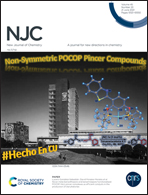Improved performances of lithium-ion batteries by conductive polymer modified copper current collector
Abstract
The copper current collector is an essential part of lithium-ion batteries (LIBs) that can greatly affect safety, stability, and energy density and it is thus of great importance to develop a strategy for improving copper (Cu) current collectors. Here, two kinds of conductive polymer (poly(3,4-ethylenedioxythiophene) (PEDOT) or polyaniline (PANi))-modified Cu foils were created through a facile anodic electrochemical polymerization method. These modified Cu foils improved the conductivity, bonding strength with electrode materials, and corrosion resistance to electrolyte, which led to superior LIB storage performance with Cu-graphite electrodes. The results showed that initial discharging capacities of Cu-graphite/Li half cells with PEDOT and PANi modification were as high as 353.9 and 332.8 mA h g−1, respectively, which were much higher than those of pristine Cu-graphite/Li half-cells (312.2 mA h g−1). After 200 cycles at 0.5 C, the discharging capacities remained at 323.27 and 279.62 mA h g−1, with capacity retention rates of 95.64 and 87.43%, respectively, which were also much higher than those of pristine Cu-graphite/Li half-cells (189.81 mA h g−1 and 67.41% retention after 200 cycles). These results indicated that Cu current collectors modified by a conductive polymer could provide a feasible approach for improving the capacity and long-life of LIBs.



 Please wait while we load your content...
Please wait while we load your content...